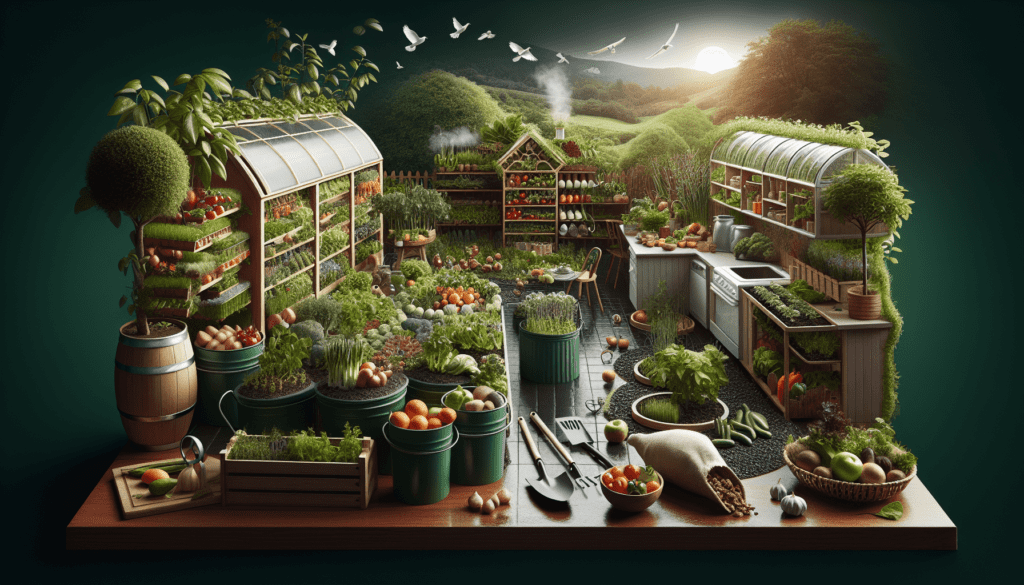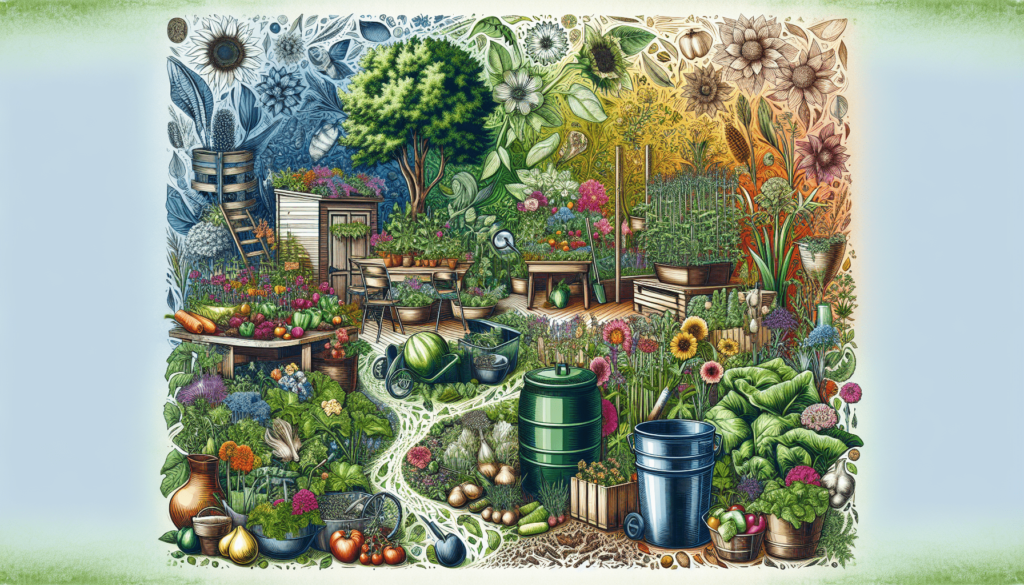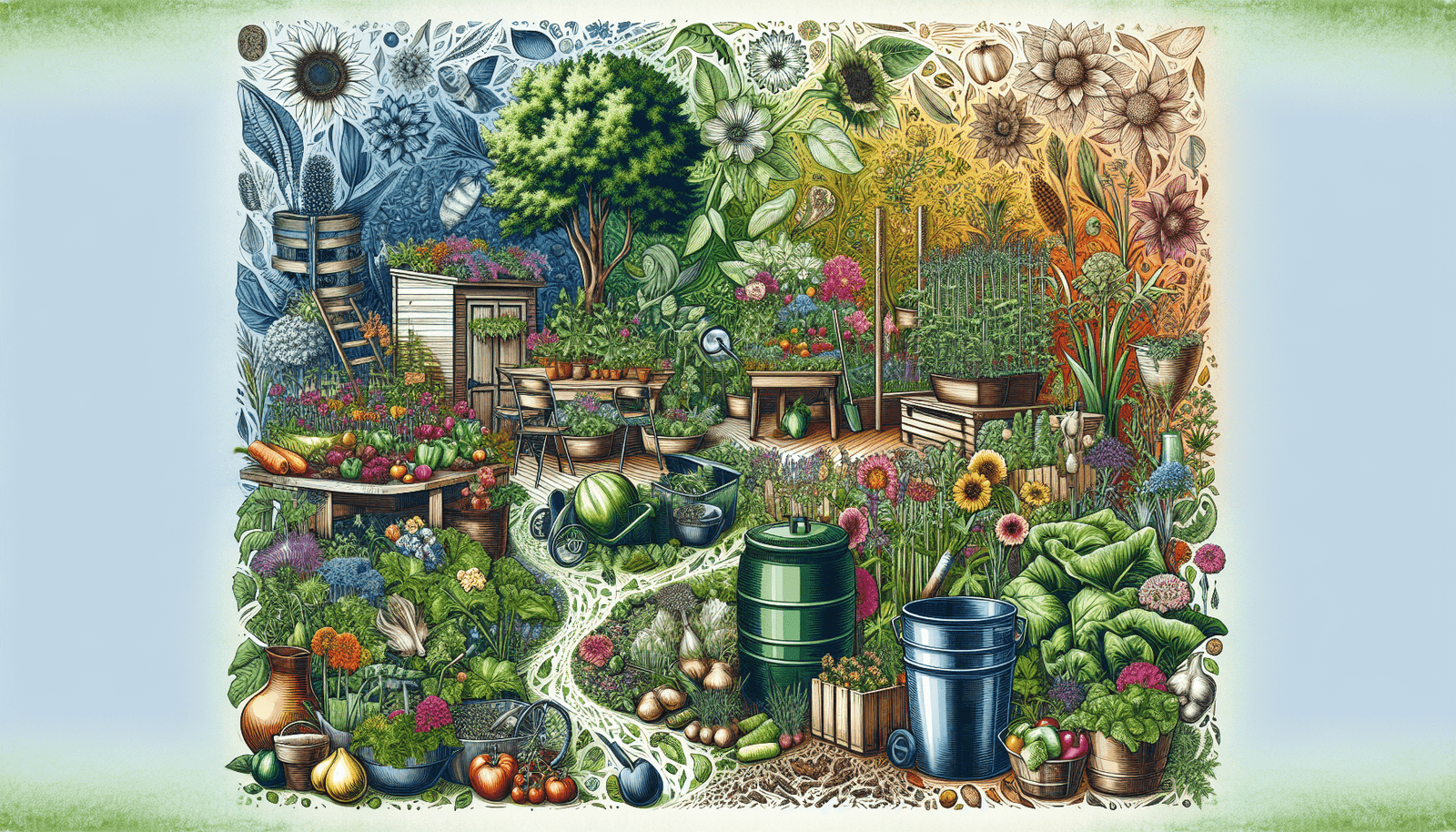Introduction
Have you ever wanted to grow your own fruits, vegetables, and herbs right in your very own backyard? Building a sustainable kitchen garden is a rewarding and fulfilling experience that allows you to have fresh and organic produce at your fingertips. In this guide, we will walk you through the essentials of building a sustainable kitchen garden that will not only benefit your health but also the environment.
Benefits of a Sustainable Kitchen Garden
Having a sustainable kitchen garden offers a wide range of benefits. Not only does it provide you with a steady supply of fresh produce, but it also helps reduce your carbon footprint by decreasing the need for transportation of goods from far distances. Additionally, growing your own food allows you to control the use of pesticides and chemicals, ensuring that your fruits and vegetables are free from harmful contaminants.
Location
Choosing the right location for your kitchen garden is essential for its success. Select a spot in your yard that receives at least 6-8 hours of sunlight per day, as most fruits and vegetables require ample sunlight to thrive. Additionally, ensure that the area has good drainage to prevent waterlogging, as excessive moisture can lead to root rot and other issues.
Determining the Best Spot for Your Kitchen Garden
When selecting a location for your kitchen garden, consider factors such as sunlight exposure, soil quality, and accessibility to water. Choose a spot that is easily accessible for regular maintenance and harvesting, as you will be spending a significant amount of time caring for your plants.
Soil Preparation
Preparing the soil for your kitchen garden is crucial in ensuring the healthy growth of your plants. Start by testing the pH levels of your soil to determine its acidity or alkalinity. Most fruits and vegetables thrive in slightly acidic soil with a pH level between 6.0 and 7.0.
Tips for Improving Soil Quality
Enhance the fertility of your soil by incorporating organic matter such as compost, manure, or mulch. These natural fertilizers not only provide essential nutrients for your plants but also improve soil structure and water retention. Additionally, consider adding earthworms to your garden, as they help aerate the soil and break down organic matter, enriching it further.

Plant Selection
Choosing the right plants for your kitchen garden is key to its success. Consider factors such as your region’s climate, soil type, and available space when selecting fruits, vegetables, and herbs to grow. Opt for a variety of crops to ensure a continuous harvest throughout the growing season.
Recommended Plants for a Sustainable Kitchen Garden
Some popular fruits and vegetables that are well-suited for kitchen gardens include tomatoes, peppers, cucumbers, lettuce, strawberries, and herbs such as basil, mint, and parsley. These crops are relatively easy to grow and provide a bountiful harvest with proper care and attention.
Watering and Irrigation
Proper watering and irrigation are essential for maintaining a healthy kitchen garden. Most fruits and vegetables require consistent moisture to thrive, especially during hot and dry periods. It is important to water your plants deeply and at the base to encourage strong root growth and prevent disease.
Efficient Watering Practices
Consider installing a drip irrigation system in your kitchen garden to ensure efficient water usage and minimize waste. Drip irrigation delivers water directly to the roots of plants, reducing evaporation and runoff. Alternatively, you can use a soaker hose or watering can to water your plants at the base, avoiding wetting the foliage to prevent fungal diseases.

Pest and Disease Management
Preventing and managing pests and diseases is crucial for maintaining a sustainable kitchen garden. Common garden pests such as aphids, caterpillars, and slugs can wreak havoc on your plants if left unchecked. Implementing natural pest control methods and practicing good garden hygiene can help prevent infestations.
Natural Pest Control Methods
Encourage beneficial insects such as ladybugs, lacewings, and praying mantises in your garden to help control pest populations naturally. You can also plant companion flowers and herbs that repel pests, such as marigolds, chives, and lavender. Additionally, consider using organic pesticides sparingly and as a last resort, as they can harm beneficial insects and disrupt the ecological balance in your garden.
Companion Planting
Companion planting is a gardening technique that involves planting different crops together to maximize growth and deter pests. By interplanting fruits, vegetables, and herbs that benefit each other, you can create a harmonious ecosystem that reduces the need for chemical pesticides and fertilizers.
Benefits of Companion Planting
Companion planting can increase crop yields, improve soil fertility, and attract beneficial insects to your garden. For example, planting basil near tomatoes can enhance tomato flavor and repel pests, while growing beans near corn can provide nitrogen for corn growth. Experiment with different companion plant combinations to find what works best for your kitchen garden.

Mulching
Mulching is a simple yet effective way to conserve moisture, suppress weeds, and improve soil health in your kitchen garden. Mulch acts as a protective barrier over the soil, preventing water evaporation and erosion while providing insulation for plant roots during extreme weather conditions.
Types of Mulch for Your Kitchen Garden
Consider using organic mulch materials such as straw, shredded leaves, grass clippings, or wood chips in your kitchen garden. Organic mulches break down over time, adding nutrients to the soil and improving its fertility. Avoid using synthetic mulches, as they can disrupt soil biology and harm beneficial organisms in your garden.
Harvesting and Storage
Knowing when and how to harvest your fruits, vegetables, and herbs is essential for enjoying the fruits of your labor. Harvest crops when they are at their peak ripeness to maximize flavor and nutritional content. Proper storage methods can help prolong the shelf life of your produce and reduce food waste.
Tips for Harvesting and Storing Produce
Harvest leafy greens such as lettuce and spinach early in the morning when they are crisp and hydrated. For fruits and vegetables that require storage, such as root crops and tomatoes, store them in a cool, dry place away from direct sunlight. Consider preserving excess produce through methods such as canning, freezing, or drying for future use.

Conclusion
Building a sustainable kitchen garden is a fulfilling and rewarding journey that allows you to connect with nature and enjoy the freshest produce possible. By following the essential tips outlined in this guide, you can create a thriving garden that not only benefits your health but also contributes to a more sustainable and eco-friendly lifestyle. Start your own kitchen garden today and reap the bountiful rewards of growing your own food.

